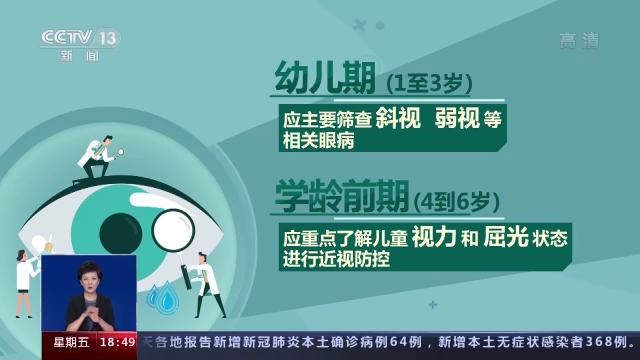High vision, amblyopia, and strabismus become the three major eye diseases of minors.
Author:Changjiang Daily Time:2022.07.16
Minor myopia is high, but myopia is also divided into authenticity. How can I accurately distinguish it? When is the best time to treat amblyopia? There is a saying that if you do n’t need to treat it, it will be good when you grow up. Is this really the case? How to stay away from myopia, amblyopia, strabismus, and protect the child's eye health? Let's take a look at the expert's introduction.
How can my myopia be true and false?
More than half of children and adolescents have close vision, especially for some younger children. Once they find that they are unclear, many parents will quickly match their children with glasses, for fear of deepening the degree. However, myopia is also divided into true and false. It is necessary to distinguish it clearly and then further correction. So how can we accurately distinguish true myopia or fake myopia? Listen to Song Hongxin, Deputy Director of Medical Optics Center of Beijing Tongren Hospital, explained ↓
Does the optometry need to be harmful to the eyes?
If the doctor said that if it is a fake myopia after the pupil, as long as the child pays attention to the use of eye hygiene to relieve eye fatigue. If it is true myopia, you need to match glasses.
Pattilage optometry, also known as ciliary muscle paralysis optometry. Its principle is to test the optometry through the eye ciliary muscles in the eye. At the same time as paralyzed ciliary muscles, it is also known as "database optometry" with scattered pupils. Many parents are worried that "database" can hurt their children's eyes. Will it really be like this? Deputy Director Song Hongxin answered this ↓
How to grasp the best time to treat amblyopia?
Myopia cannot be seen clearly, and amblyopia follows closely. It is also one of the most common child's eye diseases. According to statistics, in my country, the pre -school and school -age children's inferiority is about 3%, and there are tens of millions of children with amblyopia. So what is amblyopia? Ambisteric vision is a kind of retarded vision development and disordered eye disease. It is often accompanied by refractive and strabismus. Even if we wear glasses, the vision cannot be corrected to the normal level. The symptoms of amblyopia are: fear of light, unclear visual objects, heavy photographic phenomena, reading often read wrong lines, etc. Most of the amblyopia is caused by congenital factors, including high refractives, excessive light differences in eyes, strabismus, and congenital cataracts, congenital cornea turbidity. When is the best time to treat amblyopia? Fu Jing, Director of Pediatric Ophthalmology, Beijing Tongren Hospital, explained ↓
What may have been suffering from strabismus?
In our country, the top three of the prevalence of children's eye diseases. As the name suggests, the strabismus refers to the target that the eyes cannot be seen at the same time. Experts say that there are many types of children's strabismus. According to the direction of strabismus, they can be divided into internal strabismus, external strabismus, and strabismus. According to whether the eyeball is normal, it can be divided into common strabismus and paralyzed strabismus.
As a parent, how can you find your child in daily life as soon as possible in daily life? Then the parents need to observe carefully. If the child's eyes are sloppy, or they often close one eye when looking at things, or like to tilted their heads to talk to people, often fall to walk, and the upper steps are always inaccurate. Just take the child to the hospital to see if it is strabismus.
What eye disease screening should children focus on different ages?

As we all know, human eyes and visual functions are gradually developing. So what eye diseases should be focused on children in different ages? Experts told reporters that in the infantile period, that is, within 1 year old, it should mainly screen for children with congenital blind diseases, such as premature infants' retinopathy and congenital cataracts. The early childhood period, that is, 1 to 3 years old, should mainly screen strabismus, amblyopia and other related eye diseases. In the early stages of school age, that is, 4 to 6 years old, we should focus on understanding children's vision and refractive state, and carry out myopia prevention and control.
All in all, if children have eye problems, they need to be treated early to have an early treatment before they can have a bright future.
(Source: CCTV News Client)
【Edit: Fu Sakura】
For more exciting content, please download the "Da Wuhan" client in the major application markets.
- END -
"Stretching the front line of drugs" Zhang Haitao: "How can I walk behind this time"

Character business cardIn the past 17 years in anti -drug work, he has participate...
Shandong: New Things

On June 12, the harvester harvested wheat in the wheat field in Sangyuan Village, ...